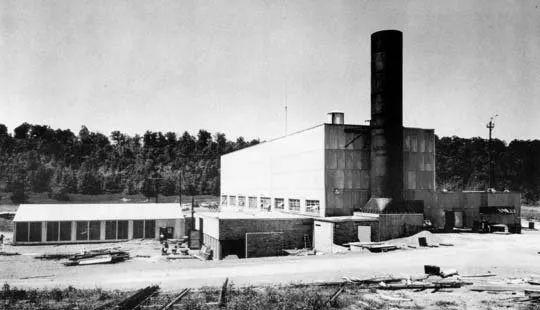Recently, some media reported that China plans to establish two molten salt reactors in Gansu Province, and the news quickly attracted Russia’s attention. According to a report by the Russian Satellite News Agency yesterday (8th), in the field of nuclear power, such reactors may be starting a new era. In the field of such reactors, there are currently several research programs in the world, and a number of technology startup teams are engaged in research and development. Among them, under the leadership of renowned scholar Jiang Mianheng in 2011, China launched the Ruthenium molten salt nuclear reactor project. According to reports, at present, there are no reactors in operation in the world, although their research has never stopped. In addition to China, the United States, Canada, and Russia are also working on prospective projects in this area. The Russian Satellite News Agency also mentioned that such reactors are suitable for use in new types of nuclear power plants or for energy installations in ships, aerospace equipment and even aircraft. According to the statement of the Chinese Academy of Sciences official website on November 10, this project received government funding support, and two nuclear reactors are expected to be put into operation by 2020. What are the advantages of this type of reactor? Jiang Mianheng once said that the exploitation of nuclear energy for thorium resources has been a dream of the world for more than half a century. Through the implementation of the Class A Strategic Pilot Science and Technology Special Project for more than six years, the Chinese Academy of Sciences has systematically mastered a series of key technologies of the Rudiene-based molten salt reactor. Through strategic cooperation between the two parties, it will surely bear fruit in Gansu. TMSR is characterized by safety, cleanliness, waterlessness, and high temperature. After the TMSR experimental reactor is built in 2020, Gansu will gradually become a new energy base for the implementation of the “One Belt and One Road†strategy and facing the country. As reported previously, the molten salt stack uses high-temperature molten salt as a coolant, and has high-temperature, low-pressure, high chemical stability, high heat capacity, and other thermal properties, eliminating the need for heavy, expensive pressure vessels, and is suitable for compact and lightweight construction. And low-cost small modular reactors. In addition, the molten salt reactor adopts a water-free cooling technology, which requires only a small amount of water to operate and can achieve high-efficiency power generation in arid regions. The high-temperature nuclear heat output from the molten salt reactor can be used for power generation. It can also be used for industrial heat applications, high-temperature hydrogen production, and hydrogen absorption of carbon dioxide to methanol. The South China Morning Post reported on the 5th that for China, it also has the advantage of using plutonium as its main fuel. China’s reserves of this metal are among the highest in the world. According to Wikipedia, the development of molten salt reactors began in the United States in the late 1940s. The intensive research on molten salt reactors began with the US Aircraft Reactor Experiment (ARE), which aims to bring nuclear reactors to high power density that can be used as a nuclear-powered bomber engine. In 1946, the United States Air Force led the ARE project and hoped to develop a nuclear-powered bomber. In the end, however, the rapid development of intercontinental missiles has deprived nuclear-powered bombers of military value. In 1961, the nuclear-powered aircraft project was terminated. Molten salt reactors also lost the military's strong backing and instead focused on civilian use. In 1965, Oak Ridge Labs built the Ruthenium-based Molten Salt Experiment Reactor (MSR) based on ARE, which has been running for 5 years. However, due to the “cold warâ€, the United States Atomic Energy Commission (AEC) abruptly cut R&D expenditures for molten salt reactors in the early 1970s when molten salt reactors entered a mature development period. The incorrect molten salt heap ended. In 1976, the molten salt reactor plan was halted by the Nixon administration. Another South China Morning Post stated that the U.S. project was shelved in the 1970s because researchers had problems when trying to reduce the size and weight of the reactors, and the public was concerned that the technology would pose a safety hazard when used on aircraft. . Another problem is that hot salts used in the fission process can cause corrosion in pipelines and nuclear reactors. The Russian Satellite News Agency also stated that the use of molten salt as a coolant is more destructive and can cause rapid damage to reactor components. At present, the lack of corresponding structural materials is a major obstacle, and of course, the necessary preparations for including such plant fuels are also complex. The report said, however, once this type of reactor has achieved a breakthrough, it will open up new opportunities for China in the development of the country's nuclear energy, or it could be built into energy devices for ships, aerospace equipment and even aircraft. Tpr Hose,Ozone Resistant Hose,Wire Reinforced Hose,Chemical Resistant Ducting Changxing VACUFLEX Hose Technology Co., Ltd. , https://www.vacuflex-cn.com
Prospects of Comprehensive Utilization of Nuclear Energy Based on TMSR Nuclear Energy System (TMSR) 
The Aircraft Reactor Test House at the Oak Ridge National Laboratory in the United States was later converted to a molten salt reactor test.